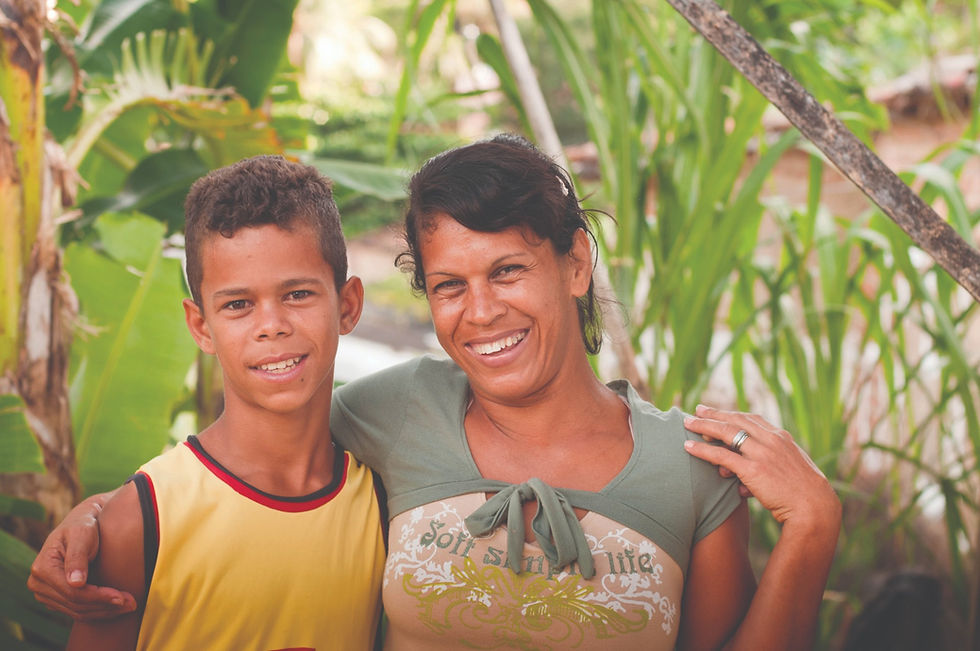How does a child end up living on the streets?
- HAPPY CHILD INTERNATIONAL

- Sep 20, 2022
- 3 min read
Updated: Oct 14, 2022

Recife, PE, the focus of Happy Child’s activities, is a city which attracts migrant populations who want to move from the impoverished, draught-prone, interior to seek a better life in the coastal region. For this reason, it is not uncommon to find children who spend most of their time on the streets. It is still possible today to find a child whose mother and grandmother were themselves street-connected children. These children will face many life-threatening risks, ranging from simple dehydration and malnutrition, right up to drug addiction, violence, and death.
For a boy or girl to end up on the streets, several protective layers in their lives will have broken down and without help or intervention these children are on a path to destruction.
The four layers of protection:
The first layer is from one's own family. It is only natural for a family to provide its members with basic subsistence care, such as food, shelter, a sense of belonging, and physical and emotional security. In the absence of this most basic care, a child can lose the bond they have with their parents and the family is seen to have failed.
The second layer is that of the extended family. When the nuclear family fails, a child is often taken in by relatives: grandparents, uncles, cousins, older siblings, etc. But if no-one is able to step up and fill the void, the extended family will have failed to protect the child.
The third layer is that of community. Sometimes, a member of the community, perhaps a friend or a neighbour, a church or even a school teacher, who has noticed a neglected child will take them under their wing and try to provide whatever they feel the child is lacking. A child that ends up on the streets indicates that his or her community has failed.
The fourth layer is Social Services including Child Protection and extending to the Judiciary, the Police, schools, social projects and charities. All have a responsibility to uphold childrens’ rights. A child that ends up on the streets means the State and organized civil society have failed.
The way back Some in Brazilian society recognize that Brazil has failed to provide children with a safe place to grow up and thrive. Others look to blame someone. Our partners in Brazil belong to the first group. They try to take a more pragmatic view and look for strategies to bring children back to a safe and healthy place, intervening where necessary to ensure the layers of protection do not break down. Of course, for this to happen, it is crucial for everyone to be engaged.
Families need to be strengthened. Communities need to find resources to provide a better environment for its vulnerable members. No matter what sector we work in, whether in public policy, pastoral work, individual counseling, rescue, education, health, or social mobilization activities, our goal must be clear: to return every child to a life in a family and, ultimately, to a life of dignity.
Happy Child International worked on the frontline rescuing street-connected children for many years. Nothing illustrates this better than the boy in the picture above. After spending a month on the streets, he was befriended by a worker from Happy Child International who visited the streets twice a week and then invited him to come and stay at Happy Child International’s care home. The worker managed to contact the boy’s mother and reconnect her with her son. Over the space of a year and with the mother having to let go of a violent partner, mother and son were eventually reunited.
More recently, Happy Child International has changed its strategy and has adopted a more preventative approach to ensure children do not end up on the streets. The children involved in Projeto Ammar Transforma live in a community where extreme poverty is more the norm than the exception and as such it is very likely that many of them could end up on the streets.
Project Ammar Transforma works to build bridges between them and their families and to strengthen the family unit. It is a slow but effective process giving children and their families hope for a better future.
Written by: Elsie Gilbert, coordinator of the Mãos Dadas Network








Comentarios